By Harry Cooper – Climate change has made our planet drastically warmer. As a result, species are dying off, severe weather has increased, and sea levels are rising. The culprit is fossil fuels. By burning fossil fuels for energy, the human race has put itself and the entire Earth in a very tough situation. The search for an alternative to fossil fuels has been an ongoing conversation for the past several decades. While many alternatives to burning oil and gas have presented themselves, one of these energy sources seems particularly promising, although it is not without controversy.
Nuclear energy is a form of energy that is produced from the breakdown of radioactive material. This process produces enormous amounts of energy. But one question we have to ask is, is nuclear energy a renewable or nonrenewable resource?
In short, no, but the reality is a little more complicated than that. While not technically a renewable energy source, nuclear energy does have the capacity to last us a very long time. But beyond the question of renewable energy sources, there are a variety of other environmental impacts that come with using nuclear energy.
Not only do these nuclear power plants produce radioactive waste, but they also have the chance of melting down and creating widespread environmental devastation. The high risks posed by nuclear energy makes it incredibly unpredictable, and in an ever changing world with an increasing amount of nuclear energy, the future of energy, the environment, and humanity is just as uncertain.
Benefits of Nuclear Energy
While nuclear energy is a very controversial source of energy, there are some benefits to it that are hard to deny. One of the most important of those benefits is that it produces no carbon emissions. By producing no carbon emissions, nuclear power plants hardly contribute anything to climate change, while still being capable of producing a large amount of energy.
Along with this, nuclear energy takes up very little space compared to other clean energies such as wind power, solar power, and geothermal energy. Nuclear power plants are also capable of producing more energy than alternative clean energy sources. It is estimated that you would need 3 million solar panels or 430 wind turbines to produce energy at the same rate as a nuclear plant.
Is Nuclear Energy Renewable?
As was mentioned earlier, nuclear energy is not technically renewable, but the reality of it is a bit more complicated. In order to fully understand just how long we could rely on nuclear energy, we have to look at the process of creating and harnessing nuclear energy.
Nuclear energy starts with an incredibly radioactive material called uranium. The uranium then undergoes a complex process called nuclear fission which involves splitting apart uranium atoms. This process causes the uranium to emit large quantities of heat. This heat generated by the nuclear fission is then used to boil water and create steam. The steam then goes on to power a turbine, generating electricity.
While the steam is capable of being reused, once the uranium is spent it must be disposed of. Since we don’t have an unlimited amount of uranium to be used for electricity generation, nuclear energy is therefore unrenewable.
However, uranium is a fairly common material. On top of that, nuclear power generates so much electricity that it is unlikely that we would run out of uranium to power our homes and businesses anytime soon.
Nuclear Fusion
Another reason why many don’t consider it an issue that nuclear energy is technically not renewable is nuclear fusion. Nuclear fusion is a different method of extracting heat from uranium that relies on fusing atomic particles together rather than breaking them up. This process could be used to create much more energy that nuclear fission, and also produce less waste.
While this could make our uranium supplies much more profitable, fusion has actually yet to be invented. However many believe nuclear fusion could be a possibility within the next 5 to 20 years.
Drawbacks of Nuclear Energy
Nuclear energy is a very viable source of energy that could serve as a replacement for fossil fuels and provide the world with energy for the foreseeable future. However, there are many other environmental issues associated with nuclear energy.
Nuclear Waste
While nuclear energy doesn’t produce any greenhouse gases as a byproduct of making energy, it does generate a good amount of nuclear waste from spent uranium fuel. This radioactive waste can be very dangerous to humans when not disposed of properly.
Nuclear waste made from uranium has a half-life of 700 million years, meaning that it won’t stop being radioactive until very far into the future. After a few hundred years the danger is significantly decreased, but this does not stop the waste from posing a serious threat to human health.
Even as nuclear energy is just starting to become widespread, we have already built up thousands of tons of spent fuel and nuclear waste. Many different methods have been tried to find a way to store and dispose of all this nuclear waste; scientists have tried everything from putting it in glass to storing it in containers deep underground. But none of these methods have been able to find a permanent solution to disposing of our nuclear waste. As we continue to leave our spent fuel in storage we risk it leaking into the air and water and contaminating nearby environments.
Nuclear Power Plant Disasters
Another notable impact of nuclear energy are nuclear power plant disasters. These disasters occur when nuclear reactors get too hot and can’t cool themselves down. When these reactors get too hot they become incredibly unstable and release massive amounts of radiation.
A relatively small number of these meltdown events have happened throughout history, but they are still something that should be taken very seriously. A disaster such as a nuclear meltdown can contaminate miles of land with nuclear pollution. This kind of event is catastrophic for the health of local communities, and the environment.
Chernobyl
Arguably the worst and most notable of nuclear power plant meltdowns, is the Chernobyl power plant in modern day Ukraine that melted down in 1986. This disaster contaminated 1,600 square miles of land and left many dead. The meltdown started when a safety test went horribly wrong and triggered a chain reaction in the power plant’s reactor, causing several explosions. 30,000 people in the nearby town of Pripyat had to be evacuated, and contaminated winds blew radioactivity from the power plant all over Europe.
The amount of radiation released during the Chernobyl meltdown was exponentially higher than the radiation released by both atomic bombs dropped on Hiroshima and Nagasaki, and the Soviet Union was quick to attempt an ambitious cover up to downplay the accident. The Soviet Union puts the official death tole of Chernobyl at 31 people. However the Union of Concerned Scientists estimates that after factoring in the adverse health affects developed due to exposure to radiation, the real death total is somewhere around 27,000.
Nuclear Pollution in Ukraine Today
35 years after undergoing the worst nuclear disaster in history, parts of Ukraine are still contaminated with radioactivity, and people are still haunted by the Chernobyl disaster. But recently Ukrainians have been put at risk of another nuclear disaster.
The War Between Ukraine and Russia
On April 28th, a Russian missile was reported passing over one of Ukraine’s fifteen active nuclear plants. This does a good job of illustrating just how important nuclear power plants are when considering how conflict affects a country.
Nuclear power plants have certainly been an important part of the war in Ukraine. Not only does fighting around the massive Chernobyl containment zone risk chances of exposure, but Zaporizhzhia, the largest nuclear power plant in Ukraine and in Europe, is also at a high risk of melting down due to nearby fighting.
While there are protocols to deal with potential meltdowns, none of the nuclear power plants are designed to be bullet, explosion, or tank proof. If these nuclear utilities were to shut down and cause a meltdown, there would not only be devastating affects across the local population, but the radioactive clouds and contamination would likely spread to many other European countries. Thus, “there do not need to be nuclear weapons for this war to go nuclear“.
Containing a Meltdown
While the world has learned its lesson from events like Chernobyl, and has implemented varieties of safety precautions at nuclear power stations across the world, containing a meltdown in Ukraine at the moment would be extremely difficult. Not only are nuclear meltdowns already hard to contain, but trying to evacuate nearby people and safely contain the radiation would be next to impossible amidst an all out war.
It is also not just nuclear reactors that pose a threat to Ukraine during their war with Russia. Many other facilities storing different toxic materials are also at risk of coming under fire and leaking into the nearby environment. One such place is a large chemical fertilizer plant in northern Ukraine that has started leaking ammonia, which is thought to have been caused by nearby warfare. This shows how warfare not only directly poses a threat to people, but can devastate the environment around them, and expose them to environmental hazards and toxic materials.
Nuclear Energy and Religion
Wherever you come out on the debate of going full steam ahead with nuclear energy or stepping on the breaks, one thing is clear: nuclear energy and the waste created by it are powerful. So powerful in fact, that “In 1981, the US Department of Energy commissioned a “Human Interference Task Force” (HITF) that would examine the possibilities of how to maintain the security of nuclear waste storage sites for 10,000 years, a period during which our civilization would likely perish, but the dangerous nature of nuclear waste would persist,” as Sebastian Musch wrote about for the Zygon Journal. Musch discusses the idea of “‘an atomic priesthood,” a religious caste that would preserve and transmit the knowledge of nuclear waste management for future generations.” This idea comes up in science fiction, but as Musch shows, it’s not so farfetched.
One role of religion is to give us a perspective that stretches beyond our lives to the lives of generations before us and generations to come. Recognizing that the dangers of nuclear energy production can be felt for thousands of years, we must turn to our religions both to find inspiration from the past on how to navigate these dangers but also to craft guidance for the future.
* Featured image source

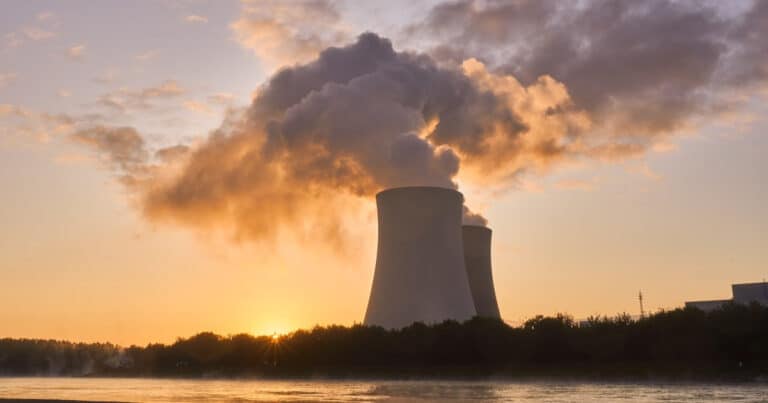
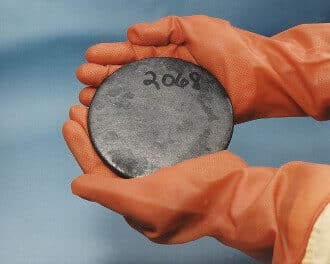
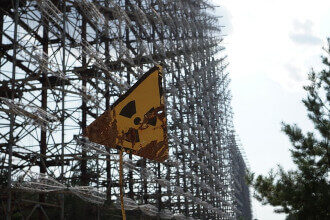


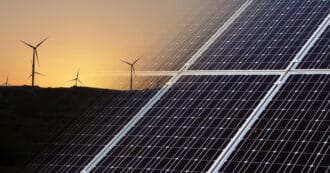

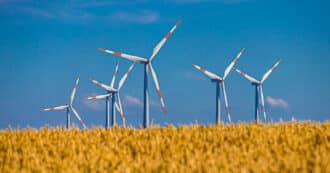
Very informative article.
Thank you for answering so many questions.